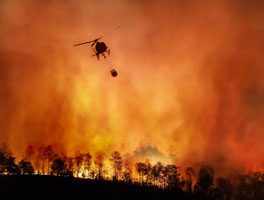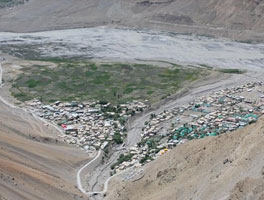 |
Dear readers,
Welcome to the Climate Weekly newsletter by the Centre for Science and Environment’s Climate Change programme and Down to Earth.
We live today at a time of unprecedented planetary heating. It is known that greenhouse gas (GHG) emissions are the primary drivers of climate change. With countries around the world trying to play their parts in responding to the climate crisis, the case of countries such as India, that are still developing (in more ways than one), remains tricky. Their economies are still growing, at the same time, they need to keep track of the associated emissions. One crucial way in which nations review their role in the climate cause is by periodically taking stock of their emissions by collating country-wide emissions data in the form of an inventory. All GHG emissions from human activities are accounted for from various sectors such as energy, industry, agriculture and waste. India’s latest GHG inventory was published in December 2023, containing the latest data on India’s emissions until 2019. It showed a 5 per cent increase in GHG emissions since the last inventory in 2016, and a 115 per cent increase since 1994. Overall, India emitted 2.6 billion tonnes of carbon dioxide equivalent (CO2e) in 2019 (the total amount after reducing the carbon that was absorbed by ‘sinks’ such as forests). This rise in GHG emissions was majorly driven by the energy sector which contributed around 75 per cent of the overall emissions, followed by the agriculture sector, industrial sector, and the waste sector.
Meanwhile, the lack of rain and snowfall in over the last three months is ringing an alarm bell in the hilly state of Himachal Pradesh. Government data points to a severe reduction in water levels in rivers originating in and flowing through Himachal to the plains, including the Chenab, Ravi, Beas, Satluj and Yamuna. The state is likely to suffer from water scarcity in the coming warm months of summer.
Nearby, climate change-driven sea-level rise could increase arsenic poisoning in Bangladesh, a new study shows. Within India, Bihar shows an upsurge in cases affected by arsenic poisoning.
Register for CSE’s onsite training on ‘Decarbonizing Industrial Sector: Accelerating Low Carbon Pathways’ to be held from February 20-23.
|
|
 |
| |
|
|
| |
 |
|
By - Sehr Raheja
Climate Change, CSE |
 |
|
By - Fizza Zaidi
Climate Change, CSE |
|
|
| |
 |
|
| |
| EXTREME WEATHER TRACKER |
| |
Hottest year 2023 is a sign of more natural disasters in future, 24 January 2024
|
 |
 |
|
|
| |
 |
|
| |
 |
 |
Dry winter: Water levels in dams on Himachal rivers decline to half of their capacity; experts warn of thirsty summer, 22 January 2024
|
|
|
| |
 |
|
| |
|
|
| |
|
|
| |
|
|
| |
 |
|
| |
CLIMATE NEWS | SCIENCE| IMPACTS| POLITICS |
|
| |
 |
|
| |
|
|
| |
 |
|
| |
|
|
| |
 |
|
| |
|
|
| |
 |
|
| |
|
|
| |
 |
|
| |
|
|
| |
 |
|
| |
|
|
| |
 |
|
| |
|
|
| |
 |
|
| |
|
|
| |
 |
|
| |
|
|
| |
 |
|
| |
|
|
| |
 |
|
| |
|
|
| |
 |
|
| |
|
|
| |
 |
|
| |
|
|
| |
 |
|
| |
|
|
| |
 |
|
| |
|
|
| |
 |
|
| |
| Anil Agarwal Dialogue |
|
|
| |

|
| |
| Onsite Training |
|
Online Training |
| |
|
|
|
|
|
|
|
|
| |
|
|